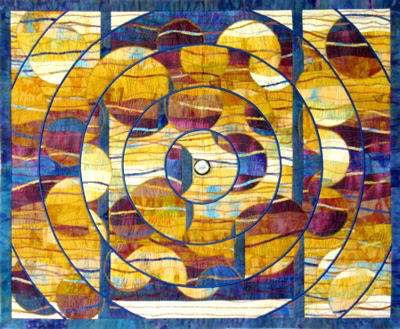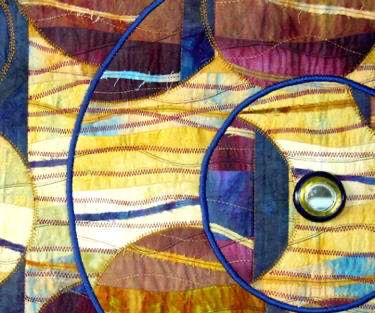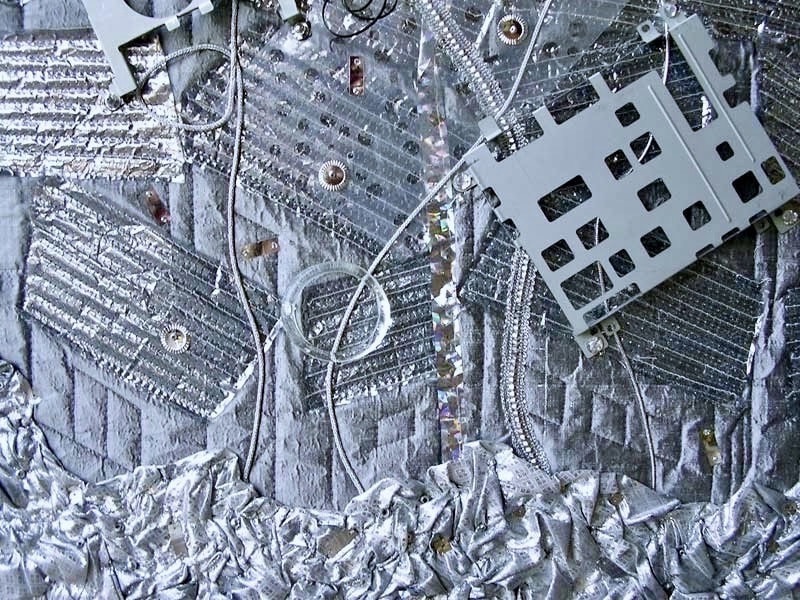DENA DALE CRAIN
|
Thinking again about Alison Sigethy's gorgeous Sea Cores exhibited in her gallery in the Torpedo Factory Art Center, let's talk about how best to capture such kinetic effects in patchwork quilting and why it is important to do so. The term "kinetic" refers to motion and the force and energy required to create it. The quilter's challenge is to incorporate a sense of motion when the materials we normally use present few opportunities to do that. However, as we see ourselves passing a mirror or any other reflective surface, we understand firsthand the phenomenon of motion. Psychology Today reports that it is important for us as human beings to see our own physical reflections. The report gives four solid reasons for this phenomenon as it urges us to take time to reflect upon ourselves:
Without detailing each of these four results of human interactivity, physical reflection gives patchwork quilt designers and makers a chance to incorporate movement into what would otherwise be a stable surface. Flashing lights, the movement of water or other substances, motion due to air currents: most of these and other such phenomena are not available to quilters due to technical difficulties. However, a single mirror, such as the one in the center of Bubbles III (encircled with two recycled glass rings), will catch and hold a passer-by's attention for several seconds. Possibly uncertain of the movement they saw while passing, viewers pause and focus on the quilt's center, seeking and finding their own reflection. Given enough time without disturbance, important glimpses of their faces in the quilt's center reward the viewers every time. Bubbles III is one of my most popular pieces. Generally speaking, any light-reflective surface will attract attention, even if it does not provide a specific image. There are many such reflective elements we can add to patchwork quilts:
These items can take many forms. Mirrors, for example, are available in various sizes and shapes, including circles, triangles, squares, and rectangles, and they can be sourced in a variety of sizes, even cut and shaped to our specifications. Sequins, beads, and crystals share light refraction from segmented surfaces. Basic light reflection without imagery occurs on any shiny metallic surface like that provided by metallic threads and paints, as well as many found objects. For my art piece, The Future is Now, a commissioned work produced for the Rockefeller Center offices in Kenya, I wanted to depict a stream of non-recyclable materials falling from the sky into the city of Nairobi. I used silver-colored silk and synthetic fabrics to define the landmark building towers of the downtown area. Then I embellished the quilt with recycled glass rings, sequins, glass and metal beads, a metallic mock-foil fabric, and even computer components! So, be creative in your use of reflective embellishments as you turn any patchwork quilt into a work of art. Seek unusual reflective objects that might be applied to a quilt and use them with careful thought to maximize the reflective effects. From Swarovski crystals to sea glass, from mirrors to metallic cords, from aluminum pop-top tabs to stainless steel kitchen implements, and from holographic ribbons to holiday foil wrappings, the list of reflective surface materials is long.
Keep purpose and safety uppermost in your mind, but experiment joyfully and thoroughly. After all, it's YOUR quilt!
0 Comments
Leave a Reply. |
AboutMostly, I post on Facebook to tell you about my travels and life experiences, point out people and things that I want to tell you about, and keep you updated on what's happening in my life as an art quilter. Archives
September 2023
Categories |




 RSS Feed
RSS Feed